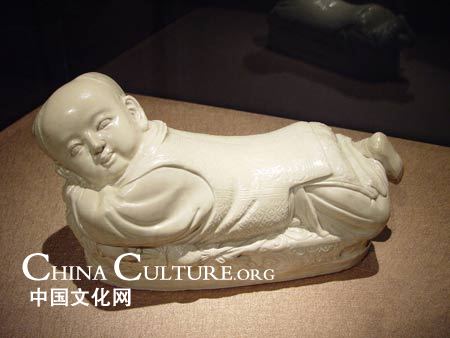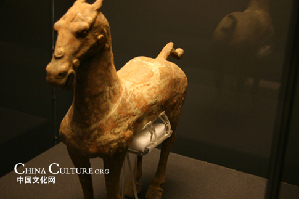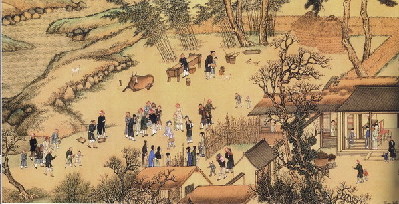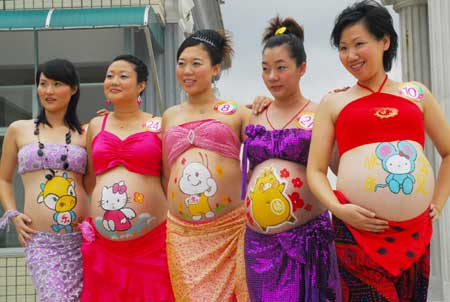| Home > Living in China > Art |
Late imperial China (1368?895)

Ming Poetry
Gao Qi is acknowledged by many as the greatest poet of the Ming Dynasty. His poems are departure of those of earlier dynasties and formed a new style of poetry in the Ming dynasty
Ming prose
- Zhang Dai is acknowledged as the greatest essayist of the Ming dynasty.
- Wen Zhenheng, the great grandson of Wen Zhengming, wrote a classic on garden architecture and interior design, Zhang Wu Zhi (On Superfluous Things).
Ming painting
Under the Ming dynasty, Chinese culture bloomed. Narrative painting, with a wider color range and a much busier composition than the Song paintings, was immensely popular during the time.
As the techniques of color printing were perfected, illustrated manuals on the art of painting began to be published. Jieziyuan Huazhuan (Manual of the Mustard Seed Garden), a five-volume work first published in 1679, has been in use as a technical textbook for artists and students ever since.
Matteo Ricci, Wen Zhengming, Xu Wei
Qing drama
The best-known form of Chinese opera is Beijing opera, which assumed its present form in the mid-19th century and was extremely popular in the Qing dynasty (1644?911). In Beijing Opera, traditional Chinese string and percussion instruments provide a strong rhythmic accompaniment to the acting. The acting is based on allusion: gestures, footwork, and other body movements express such actions as riding a horse, rowing a boat, or opening a door.
Although it is called Beijing opera, its origins are not in Beijing but in the Chinese provinces of Anhui and Hubei. Beijing opera got its two main melodies, Xipi and Erhuang, from Anhui and Hubei operas. Much dialogue is also carried out in an archaic dialect originating partially from those regions. It also absorbed music and arias from other operas and musical arts such as the historic Qinqiang. It is regarded that Beijing Opera was born when the Four Great Anhui Troupes came to Beijing in 1790. Beijing opera was originally staged for the court and came into the public later. In 1828, some famous Hubei troupes came to Beijing. They often jointly performed in the stage with Anhui troupes. The combination gradually formed Beijing opera's main melodies.
Qing poetry
Yuan Mei was a well-known poet who lived during the Qing Dynasty. In the decades before his death, Yuan Mei produced a large body of poetry, essays and paintings. His works reflected his interest in Chan Buddhism and the supernatural, at the expense of Daoism and institutional Buddhism—both of which he rejected. Yuan is most famous for his poetry, which has been described as "unusually clear and elegant language". His views on poetry as expressed in the Suiyuan shihua (隨園詩話) stressed the importance of personal feeling and technical perfection.
Early Qing painting
Giuseppe Castiglione, Bada Shanren, Jiang Tingxi, Shitao
Shanghai School
The Shanghai School (海上画派 Haishang Huapai or 海派 Haipai) is a very important Chinese school of traditional arts during the Qing Dynasty and the whole of 20th century. Under efforts of masters from this school, traditional Chinese art reached another climax and continued to the present in forms of the "Chinese painting" (中国? or guohua (国画) for short. The Shanghai School challenged and broke the literati tradition of Chinese art, while also paying technical homage to the ancient masters and improving on existing traditional techniques. Members of this school were themselves educated literati who had come to question their very status and the purpose of art, and had anticipated the impending modernization of Chinese society. In an era of rapid social change, works from the Shanghai School were widely innovative and diverse, and often contained thoughtful yet subtle social commentary. The most well-known figures from this school are Ren Xiong (任熊), Ren Yi (任伯?, Zhao Zhiqian (赵之?, Wu Changshuo (吴昌?, Sha Menghai (沙孟? calligraphist), Pan Tianshou (潘天?, Fu Baoshi (傅抱?.
Qing fiction
Many great works of art and literature originated during the period, and the Qianlong emperor in particular undertook huge projects to preserve important cultural texts. The novel form became widely read and perhaps China's most famous novel, Dream of the Red Chamber, was written in the mid-eighteenth century.
Cao Xueqin is the author of the famous Chinese work Dream of the Red Chamber. Extant handwritten copies of this work—some 80 chapters—had been in circulation in Beijing shortly after Cao's death, before Gao Ê, who claimed to have access to the former's working papers, published a complete 120-chapter version in 1792.
Pu Songling was a famous writer of Liaozhai Zhiyi 《聊齋志異》during the Qing dynasty. He opened a tea house and invited his guests to tell stories, and then he would compile the tales and write them. Many of his tales have been made into films. One of these films is called The Chinese Ghost Story by Tsui Hark, a Hong Kong director.
Art
 more
moreClassic Chinese Handicraft:
Porcelain pillows, as classic Chinese handicraft,

Chinese Treasures Returned from
As witness of Chinese culture and custom, countless treasures

The lost legacy: classical music
Accompany by the long history of China, Chinese classical music

Customs
 more
moreChinese Kungfu
Kungfu Taste: Learn Martial Art in Shaolin Temple
The mention of Shaolin Temple conjures up images of a quiet and
Keet Kune Do will reappears on screen: BRUCE Lee and
The Legend of Bruce Lee is shot by China Central Television
The Road to the Olympic Games for Wushu
Wushu, also called kungfu, martial arts, is attracting more and more




 print
print  email
email  Favorite
Favorite  Transtlate
Transtlate 


